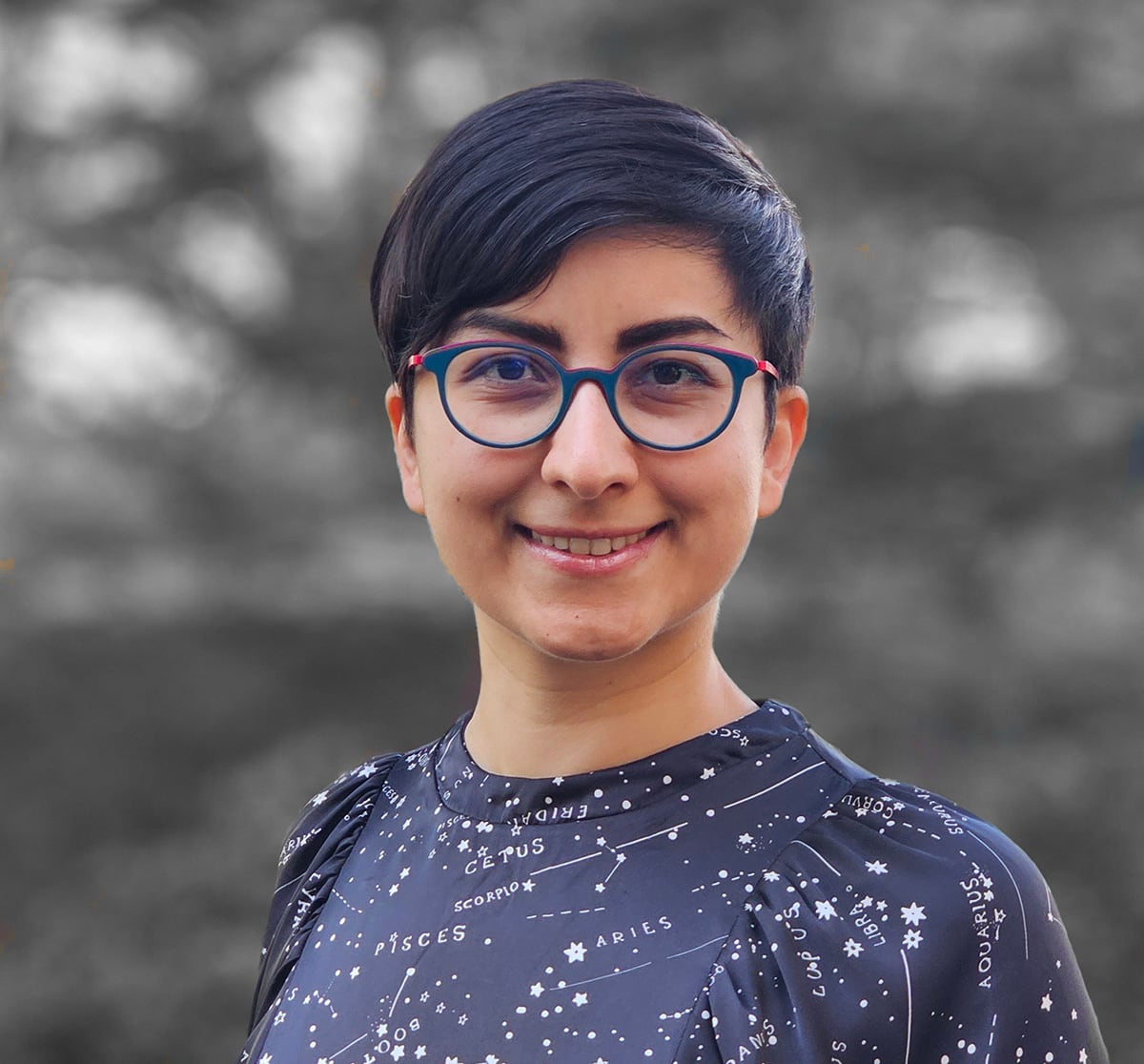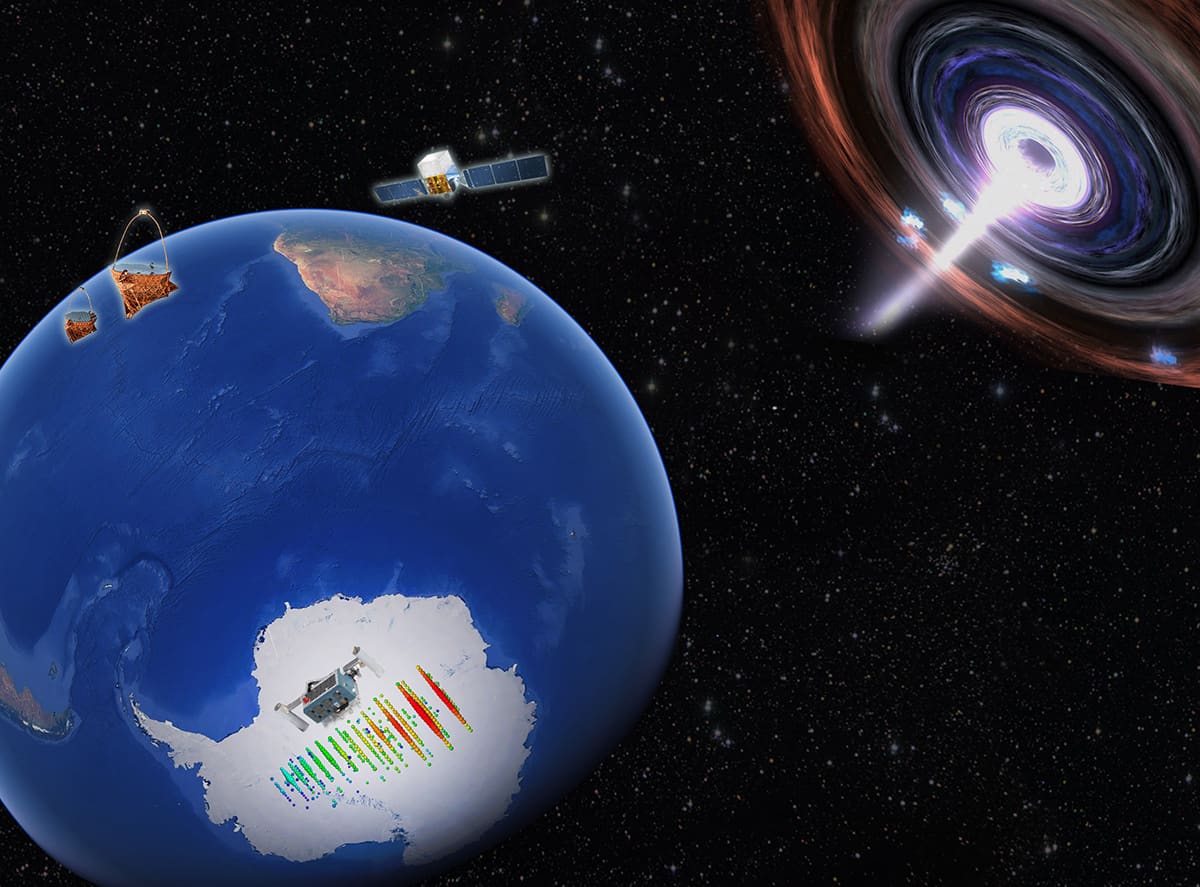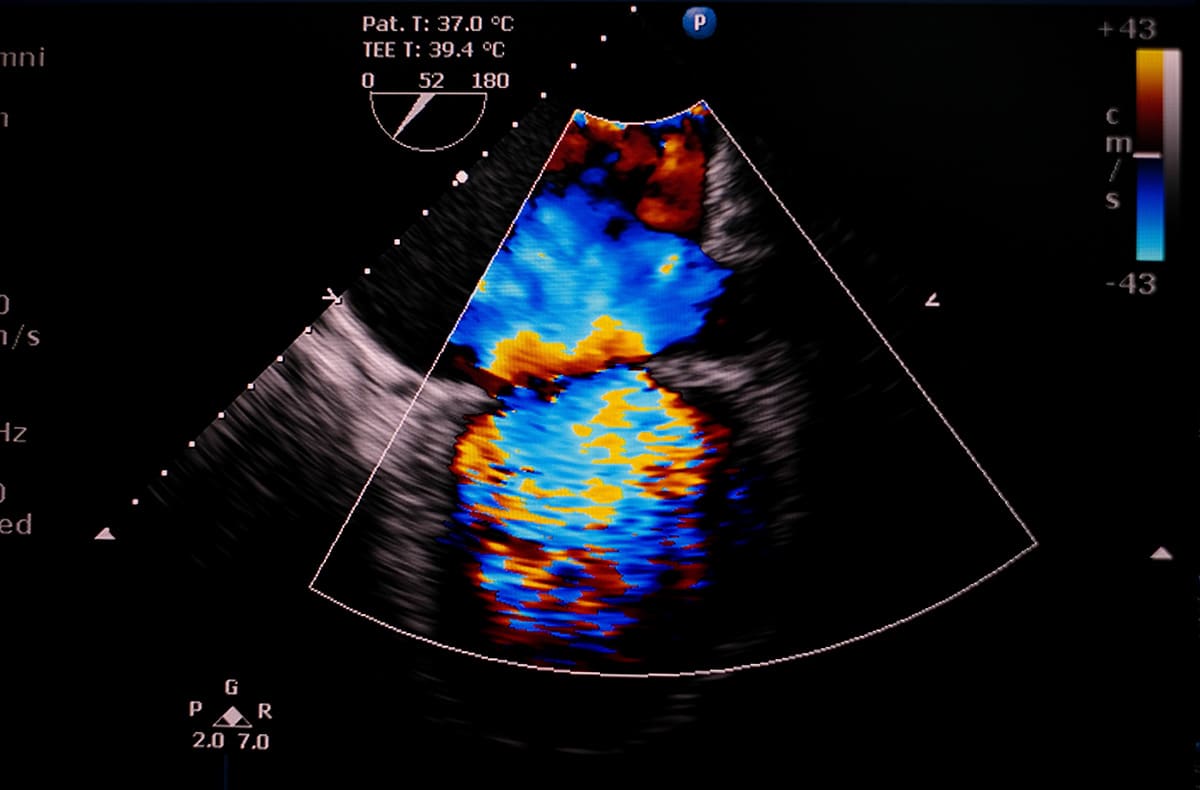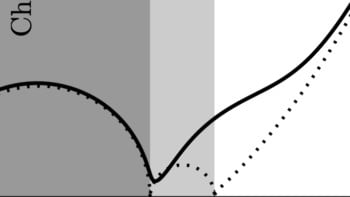Data scientist and artificial-intelligence researcher Azadeh Keivani talks to Tushna Commissariat about her journey from astronomy to healthcare, co-founding an educational non-profit organization and her work in outreach

Astrophysicist turned data scientist Azadeh Keivani has had an unusual career journey. From an early interest in astronomy as a high school student in Iran, she moved to the US to complete a PhD and postdoc in cosmic rays and particle astrophysics, and now develops machine-learning techniques across healthcare, education and business. Keivani is also passionate about sharing her journey with current students.
Today, she works at NewYork-Presbyterian Hospital, developing AI models for cardiology. In 2023 Keivani received the American Physical Society (APS) Forum on Industrial and Applied Physics (FIAP) Career Lectureship Award. She talks about the importance of being open-minded, the value of interdisciplinary collaborations, her involvement in educational initiatives, and deciding whether to stay in academia.
What sparked your initial interest in science, and physics in particular?
When I was in middle school, I attended a stargazing event for the first time, and that was so fascinating to me. Not only looking at the sky itself, but also being surrounded by cool people was inspirational. After that, I signed up for an astronomy magazine that held regular events, including stargazing nights and astronomy workshops in Tehran, where I went to school. I thought that physics was the closest thing to astronomy that I could pursue.
Later on in high school, I got very interested in physics itself, in solving physics problems, as well as reading undergraduate and even postgraduate-level textbooks. I didn’t understand much and the maths was hard, I was just excited to see what the books talked about.
At the time in Iran, we had a university entrance exam for everyone in the country, and they sorted people based on their interest and exam score. I ended up with the subject and university I wanted, which was physics at Sharif University of Technology in Tehran.
What led you to do a PhD in astrophysics? And what was it like, being part of a large collaboration?
When I was at Sharif University, I started working with a cosmic-ray physics group, and I decided to continue in this field in grad school. In 2007, when I was a third-year undergraduate, I attended the International Cosmic Ray Conference (ICRC) in Mexico. That was a great experience because I got to know a lot of people from different US universities, including a group at Louisiana State University (LSU), which I joined a year later for my PhD. I worked on the effects of the galactic magnetic fields on deflections of ultrahigh-energy cosmic rays. My adviser was James Matthews, one of the pioneers of the Pierre Auger Cosmic Ray Observatory. He has always been a great mentor to me and I am so happy that we are still in contact.
Working in a collaboration has its pros and cons. For example, in most collaborations, author lists are written in alphabetical order, so even if you are the main contributor, you won’t be the first author on the paper. This usually means lower visibility for junior physicists. But at the same time, you build a very large network as you go to collaboration meetings regularly. That made it relatively easy for me to find a postdoc position. I was hired by Miguel Mostafa and Doug Cowen for a postdoc at Pennsylvania State University, which I joined in 2014. They, along with Derek Fox, made my time at Penn State truly fruitful. I think of them as my forever mentors, who had big impact on my career.
There, I became part of the IceCube Neutrino Observatory and a project called the Astrophysical Multi-messenger Observatory Network (AMON). This was a project to build cyber infrastructure connecting all high-energy astrophysical observatories in a single network. We got data, ran analysis in real time, and if there was a signal that pointed to an astrophysical event or source in the sky, it would send alerts to other observatories. With this system, we discovered the first evidence of an astrophysical high-energy neutrino source in 2017.

One of the best things about working on the AMON project was the feeling of ownership. I worked closely with another postdoc, Gordana Tešić, who is a good friend now. I also developed several soft skills as well as technical skills such as coding, building Python packages and databases, statistical analysis and machine learning modelling.
What were the next steps for you, after your postdoc?
After my postdoc, I started applying for faculty positions. At the time, my husband was in New York, and I really wanted a job there, so I ended up picking this three-year lectureship called the Frontiers of Science Fellowship at Columbia University.
This programme, founded by astronomer and educator David Helfand, recruits people with PhDs with different STEM backgrounds – across physics, biology, chemistry, neuroscience and earth sciences. The idea is to instil the scientific habits of mind in new students through different disciplines, so every one of us had to teach all these topics. We were teaching different scientific skills, such as how to read articles and how to distinguish science from pseudoscience, how to understand trends in plots and statistics. It was very challenging and interesting because, for the first time in a long time, I had to learn concepts outside physics, to be able to teach them. I was also a NASA-funded researcher at the Columbia Astrophysics Laboratory, using data from several high-energy astrophysical observatories in multimessenger astronomy; I focused on exploiting machine-learning techniques.
At the same time, during my Columbia lectureship, teaching became very interesting to me, and also education more generally. I started thinking about how I could help students, especially from underserved communities. In many ways, our educational systems are still quite traditional. But the world is changing, so students really need to develop their technical, digital and entrepreneurial skills from early on. Often, minority students and those from lower-income backgrounds do not have sufficient opportunities or mentors available to them, to help plan their education and careers. This was on my mind especially during the early days of the COVID-19 pandemic, and so I co-founded an educational technology non-profit organization to empower the next generational workforce, called Digital Age Academy (DAA).
We recruited students from the 11th or 12th grade (ages 16–18) by partnering with high schools in the South Bronx in New York. We developed some workforce and entrepreneurial development programmes, and we matched students with mentors. Together, they defined some projects that helped their families or their community, and they had some brilliant ideas. At the end of 2020 we graduated the first DAA cohort. We now run a number of programmes through the year, and have corporate and school partners.
You have now moved out of academia and are in an industry role that is still heavily involved in physics. What were some of the factors that you considered while making this career choice?
There were a few things I thought about. One was whether I wanted to continue working on the narrow topic of multimessenger astrophysics, or to explore new fields of research. I was thinking about whether I wanted to become hyper-specialized, or to develop new skills and have a multidimensional perspective on the professional world. That became more appealing to me, although I know most people want to climb the corporate or academic ladder.
I was also thinking about the salary because living in New York is very expensive. It’s not necessarily the most important thing, but it was definitely a factor. A lot of my friends with PhDs who went into finance or data science were earning three or four times a postdoc’s salary.
I also wanted to stay in New York, because, for an immigrant like me, it’s the best city. You feel you belong here. But if I wanted to become a professor, I would have to apply everywhere in the US. The work–life balance was another aspect, and I was also intrigued to learn about other cultures outside the particle astrophysics community.
At the end of 2020, I decided to leave Columbia, and for one year I continued working only on DAA. At the end of 2021, I decided to apply for data science positions, but with a scientific flavour, so I focused on biotech and healthcare. I ended up at Memorial Sloan Kettering Cancer Center (MSK) as a senior data scientist. I was part of a team called “Technology Incubation”, which included different experts in design, product, engineering and data science, who worked together on bringing in new technologies for cancer care. Then, at the beginning of 2023 I started my current role at the NewYork-Presbyterian Hospital.
What’s a typical day like for you now, and what are some of the main skills you use in your job?
Our team, including scientists and engineers at NewYork-Presbyterian, works closely with Columbia University’s Division of Cardiology and Department of Biomedical Informatics. I mainly use echocardiographic data and build deep-learning models to detect cardiovascular diseases at earlier stages. We automate the whole process of reading echocardiographic images and clips, and these models help cardiologists to quickly read the echoes and diagnose diseases like aortic stenosis.
When you’re building machine-learning or statistical models to solve problems, you need to define the problem well, and come up with a clear question and hypothesis
I use both my physics knowledge and the technical skills I acquired in academia. When you’re building machine-learning or statistical models to solve problems, you need to define the problem well, and come up with a clear question and hypothesis, which my physics background helps with. I also need to use my computer skills to pre-process and analyse the data.
After I have a good dataset, I use the maths I learned in grad school to find the best algorithm to build the model around. Being sceptical is another thing I borrowed from being a physicist – for example, we need to test the models in clinical studies, so it is very important to make sure they have decent results.

Also, we use many physics concepts in cardiology and healthcare in general. For example, you need to use the Doppler effect when you send and receive signals from the heart. Based on the velocity and frequency of the signal, you can calculate the velocity of the blood.
Another interesting example, from when I worked at MSK, was when I noticed that a former colleague from particle astrophysics had posted online about researchers at MSK who had used the Cherenkov effect in their imaging technique for tumour detection. I contacted him and we all got on a call together. It was very interesting because he is a particle astrophysicist, and the other two people were a biologist and an oncologist, and I was in between. That ignited a collaboration between our team at MSK and the other team at MSK, because I had some ideas for a machine-learning model for their data.
In 2023 you were awarded the American Physical Society (APS) Forum on Industrial and Applied Physics (FIAP) lectureship. Could you tell me a bit about that work?
After I started my career in healthcare, I started thinking about giving lectures to graduate students and postdocs to tell them my story. I wanted to talk about my experiences inside and outside academia, share the pros and cons I considered when I was leaving, and empower people to think about their own unique career path.
I went to four universities and gave talks, and I could totally see myself in those lovely students, seeing how common our worries and challenges are. I also wanted to help international students who have to think about visas on the path towards getting a more settled status in the US.
When I got the FIAP award, I was very excited because I now have more opportunities to go to different schools and inspire students to think outside the box. Part of this award is giving lectures in at least three institutes, including an underserved school. I’ve been invited to the APS March meeting, where I will receive my award, and I will also give an invited talk about my journey and my advice on career opportunities for physicists.
What’s your advice to students starting out today? What do you know now that you wish you’d known when you started your career?
When I was a student, I remember that most of us who were astronomy graduate students only attended astronomy seminars. If you want to work on one topic and become really good at it, then you might want to use every single minute focusing on that topic. The caveat is you become so focused that you might forget about new insights and perspectives. Coming up with new ideas doesn’t happen in solitude. It happens when you are exposed to other people’s thoughts, work and experience.
It’s not possible to attend every talk, but if I were a student again, I would definitely go to more seminars and explore other science departments on campus. Sometimes speakers give more general talks that are not necessarily very technical, so you might grasp half of a talk about another field and understand their approach. You might even go to an art performance and generate a new idea about your own work, or realize you are interested in a field like finance or the gaming industry. So keep your eyes open and have an open mind.
I remember at the end of grad school I felt a lot of pressure and I was worrying about finding a postdoc. You have to remember you’ve developed a lot of skills and you have a lot of knowledge and experience. You will always be able to find a job, and not only survive but thrive. You just need to believe in yourself and you can do amazing things. You can be the person who discovers something new or creates something for other people. So these are critical, pivotal moments in life. Although they are scary, they can lead you to become the best version of yourself.
Last, there are moments in everyone’s career, and in life in general, when you feel disappointed and feel like you cannot succeed. You might think that you can’t find a job or that you’re not good at one thing. This is very normal and is actually not a bad thing. It means you are revisiting your values, and you can use that opportunity to find your next step. Do not think it is the end of the world. It’s the beginning of a new chapter.
- This article was first published in APS Careers, a guide published by Physics World on behalf of the American Physical Society. You can read the full guide online



